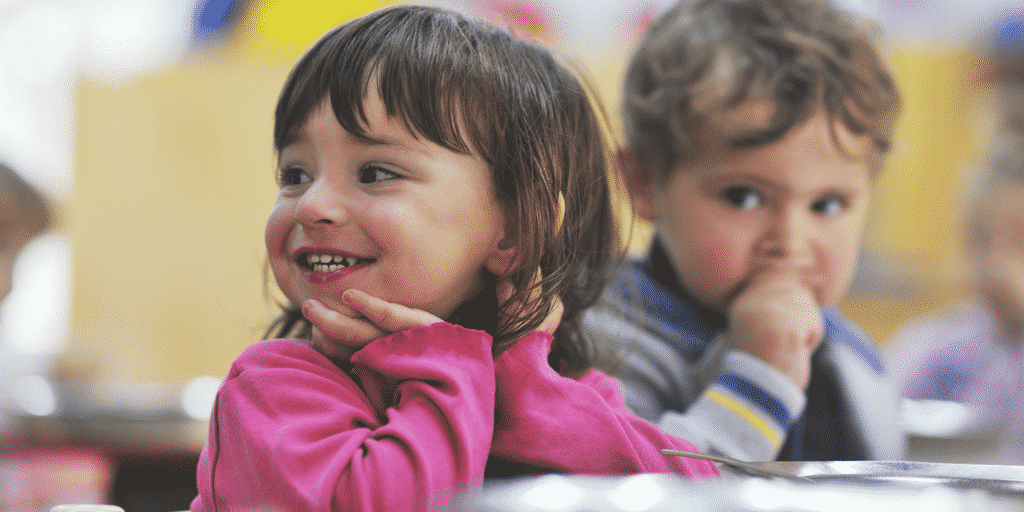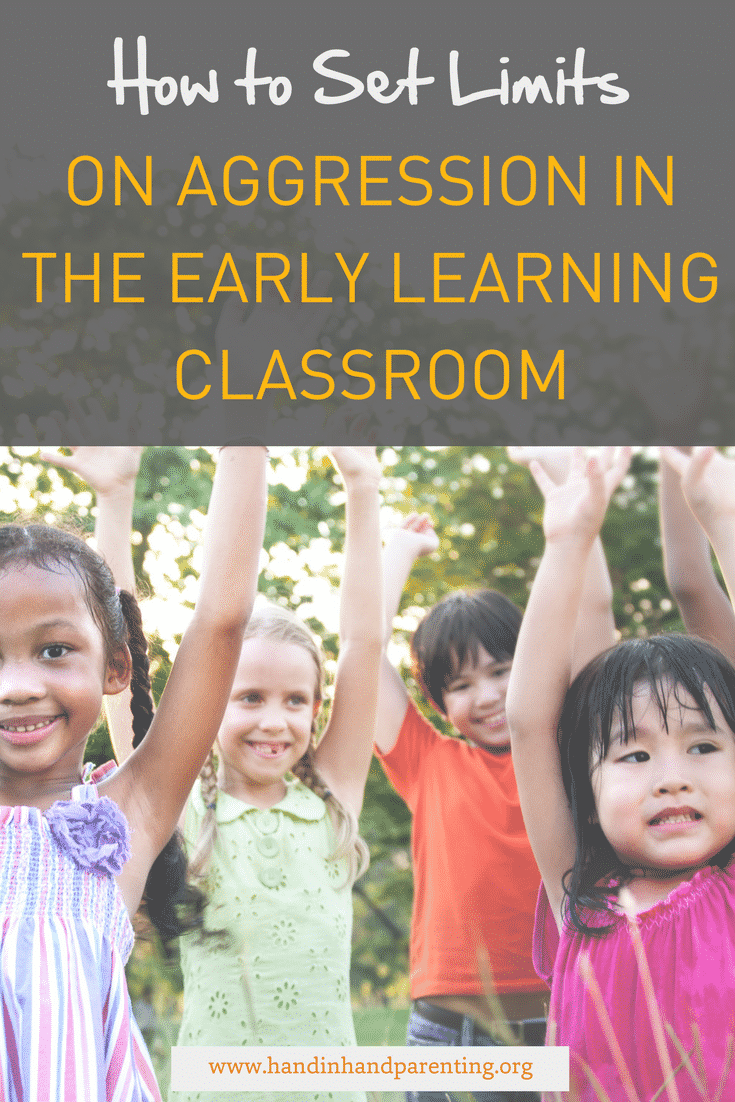![]() A Guest Post by Laura Minnigerode
A Guest Post by Laura Minnigerode
 Let’s start with this fact: An aggressive child is struggling with fear. What can that look like in a preschool classroom? There are almost as many answers as children, but here are some behaviors I have seen in my classroom:
Let’s start with this fact: An aggressive child is struggling with fear. What can that look like in a preschool classroom? There are almost as many answers as children, but here are some behaviors I have seen in my classroom:
- Biting
- Grabbing
- Hitting
- Pushing
- Scratching
- Pinching
- Verbal attention seeking
Setting a limit on aggressive behavior is essential, without question, but limits don't have to be loud, forceful or punitive. Using the Hand in Hand Parenting approach, teachers can set a calm, firm limit that holds space for a child, bringing him closer rather than pushing them away.
How Can Teachers Set Calm Limits on Aggressive Behavior in Class?
What would a traditional response to hitting be? Traditionally, a limit will include a form of behavior modification.
As Patty Wipfler writes in Listen, Five Simple Tools to Meet Your Everyday Parenting Challenges, an old way of thinking associated with many discipline approaches is meeting ‘uncivil acts with negative responses.’
This old way of thinking goes that if we make a child feel uncomfortable and bad, this will lead to a change in behavior. This ignores that off-track behavior is fueled by disconnection and fear.
Here's how that looks in a common scenario: Two children are on the playground, and the teacher sees one child push another. She may say in an angry tone, “No! You are showing me you should NOT be allowed to play with Henry.” She hustles the child away from everyone else, possibly to sit by herself in the thinking chair.
Setting a limit on pushing is absolutely necessary. We know that. But this familiar approach does not acknowledge that truth that we know to be behind the aggressive behavior – that an aggressive child is a fearful child.
It may be effective at stopping the behavior in the short term, but, responding with harshness and potentially shaming consequences piles more hurt and bad feelings onto the fear that is already there, pushing the child farther away from feeling safe and connected.
I need to add that these kinds of responses are so deeply embedded in our own experiences- what we adults encountered as children- that it is challenging to change course. We are all so familiar with this model, it is imprinted.
Two Ways To Set Limits on Aggression In Your Class
So, how can using Hand in Hand’s tools help?
When a teacher can:
- Be near
- Stay calm
- Listen first, then bring a gentle yet firm limit
There are a few ways that we can set an effective limit, and often it will depend on your observations of the situation. Here are two that you can try in your work with children immediately.
A Playful Limit
 Laughter lets a child laugh and relax. When a child's tensions are light and a teacher sets a playful limit the response will usually come in a smile and hopefully, laughter. That laughter dissolves the aggression and eases the fears occurring below the surface. It also sends the message that this teacher has control of the situation in a very accessible way.
Laughter lets a child laugh and relax. When a child's tensions are light and a teacher sets a playful limit the response will usually come in a smile and hopefully, laughter. That laughter dissolves the aggression and eases the fears occurring below the surface. It also sends the message that this teacher has control of the situation in a very accessible way.
A playful limit might come in the form of a Vigorous Snuggle or a playful comment, “Oops- are those silly pushy bugs are back again!”
A Calm Limit With Eye Contact
In other situations, the teacher may set a limit with a gentle but firm ‘no’ and eye contact. In this situation, the child might find enough trust and safety to cry, also a way to release the tension they are holding inside. (For more on this process, read The Science Behind the Hand in Hand Parenting Tool of Staylistening).
When the child cries, the teacher doesn’t actually need to say much. More useful to the child is staying near, listening and offering understanding through eye contact.
The work that teachers of young children do is vital, difficult and incredibly undervalued. Some of the ways this lack of respect manifests is a scarcity of time, in the form of paid planning time or breaks, and in money, we teachers receive low salaries for challenging work.
These factors can make it hard for teachers to feel supported, and can also affect the way we respond to the children around us. Their feelings can bring up feelings for us. I’m including myself in that.
The gentle, playful or receptive approaches above all share the quality of holding space for a child’s emotions and are tried-and-tested effective. But they are most effective when we, in turn, can get support from an adult listening partner about the feelings that come up when a child is aggressive in class.
Thank you for reading, and I hope to hear thoughts from readers about using Hand in Hand tools in the classroom. I'm happy to answer any questions that you might have.
Meet the Instructor
 Laura Minnigerode is an Ed.M. and certified Hand in Hand Parenting instructor, teacher and educational researcher. She holds the work of teachers in very high esteem and is honored to work as a teacher trainer in Texas.
Laura Minnigerode is an Ed.M. and certified Hand in Hand Parenting instructor, teacher and educational researcher. She holds the work of teachers in very high esteem and is honored to work as a teacher trainer in Texas.
Laura will be presenting Sharing: A Relationship-Based Approach to Conflict Resolution for teachers attending the TXAEYC 2018 Annual Conference. Join here there.
You can work with Laura in her upcoming class Tools for Listening and Responding To Children's Emotions. Go here to register
More Tools and Resources for Handling Aggression
- Learn more about Helping a Child with Aggression
- Find out how Hand in Hand's Tools Can Help Help Create Trauma Sensitive Classrooms
- Join this call on How to Become a Hand in Hand Instructor